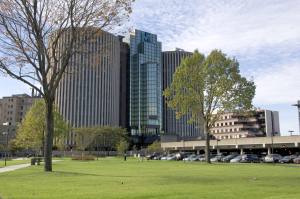by Kelley Kaufmann, APRN-CNP, PMHNP-BC, Psychiatric Nurse Practitioner, Center for Health Equity Engagement Education and Research
A new study by Engemann, et al. explores why growing up in urban environments is associated with increased risk of developing psychiatric disorders. Their conclusion is that the amount of green space present during childhood may be a mediating factor. Specifically, they found that “high levels of green space presence during childhood are associated with lower risk of a wide spectrum of psychiatric disorders later in life.” Persons who, during childhood, lived with the lowest level of green space—a common feature of urban environments—had up to a 55% higher risk of developing subsequent mental illness than those who lived with the highest level of green space. Furthermore, there was a stronger association with cumulative green space presence during childhood compared with single-year green space presence suggesting that presence of green space throughout childhood is important. Despite the exact “mechanistic links between green space and psychiatric disorders” remaining unknown, the authors note the mental health benefits of integrating natural environments into urban planning and childhood life.

